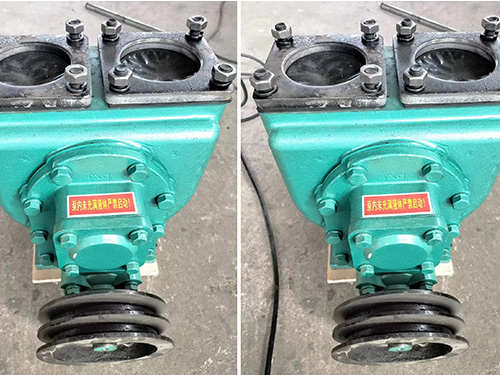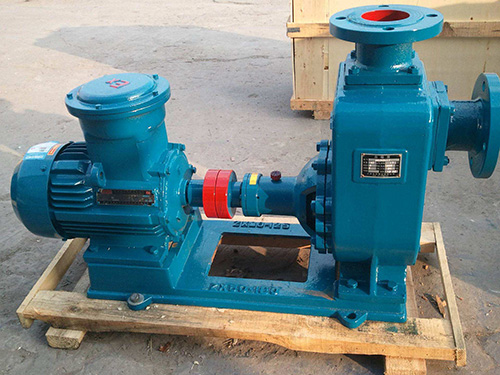How can we improve the service life of gear pumps
2024-06-27 08:36:54
How can we improve the service life of gear pumps?
Stainless steel oil pumps play a very important role in industrial production processes. How to improve the service life of gear pumps, make them play a significant role in production, and minimize the occurrence of gear pump failures? Below, our company's experts in the gear pump industry will explain to you.
Firstly, from the material differentiation of gear pumps, gear pumps are mainly divided into ordinary cast iron gear pumps, stainless steel gear pumps, high-temperature gear pumps, and copper gear pumps. Divided into high-temperature gear pumps, insulated gear pumps, and magnetic driven gear pumps in terms of structure and performance. For conveying under different working conditions, the material of each component of the gear pump should be reasonably selected. That is to say, when conveying different media, a gear pump should be reasonably selected based on the characteristics of the media. So, how can we improve the service life of the gear pump? Below, we will introduce the different classifications of gear pumps mentioned above one by one.
1. Cast iron gear pump
Cast iron gear pumps are mainly suitable for lubrication, viscosity below 1500cst, medium without solid particles, and temperatures below 80 ℃. In working conditions like this, the service life of conventional gear pumps is generally longer, usually 3-5 years. As time goes on, the pressure of the gear pump will decrease, the flow rate will decrease, and there will be leakage and other phenomena in the seal. In severe cases, it may not be able to pump oil. This situation basically belongs to normal wear of gear pumps. Especially when conveying lubricating grease media, some media may not be very clean, while others may contain small particles, such as residual oil, reused oil, heavy or light fuel used for boiler combustion. If you want to improve the service life of gear pumps on the basis of conventional gear pumps, then start from the following points; (1) Change the gear material of the gear pump from conventional 45 material to 40Cr material, and perform quenching and tempering treatment. (2) The gear pump thrust plate has been changed from cast iron material to cast steel material. (3) The shaft sleeve has been changed from the original steel back composite sleeve to stainless steel shaft sleeve or silicon carbide shaft sleeve.
2. Stainless steel gear pump
The selection of stainless steel gear pumps mainly depends on the corrosion characteristics of the medium conveyed by the gear pump and the requirements for hygiene. The common problem with stainless steel gear pumps is that the material does not meet the standard, resulting in a short service life or inability to use the gear pump at all. To improve the service life of stainless steel gear pumps, the selection should be accurate according to different working conditions, and the quenching and tempering treatment methods for each component should be reasonable.
3. High temperature gear pump
A high-temperature gear pump, as the name suggests, is a gear pump that delivers medium with higher temperatures. If the temperature of the gear pump is between 150 degrees, ordinary ductile iron can be selected. Cast steel material should be selected between 150 degrees and 250 degrees, and stainless steel material should be selected above 250 degrees. When selecting the material, the overall density of the casting or forging should be considered. It is recommended to choose forgings for processing of high-temperature gear pumps. Graphite packing, carbon fiber packing, mechanical seals, or corrugated pipe mechanical seals are commonly used for sealing.
<2> Common causes and troubleshooting methods of gear pumps
1. Wear of internal parts of the oil pump can cause internal leakage. The large leakage area between the floating shaft sleeve and the gear end face is the main cause of internal leakage. This part of the leakage accounts for about 50% to 70% of the total internal leakage. The volumetric efficiency of gear pumps with wear and internal leakage decreases, and the output power of the oil pump is lower than the input power. All of its losses are converted into thermal energy, which can cause the oil pump to overheat. If the joint plane is pressed tightly, the floating shaft sleeve will have a slight movement during operation, causing wear and tear, resulting in slow or ineffective lifting of agricultural tools. Such floating shaft sleeves can be replaced or repaired.
2. The wear of the gear oil pump housing is mainly caused by the wear of the floating shaft sleeve hole (the normal clearance between the gear shaft and the shaft sleeve is 0.09~0.175mm, and the larger should not exceed 0.20mm). The gear works under the pressure of oil, and the tip of the gear is close to the oil pump housing, causing wear on the low-pressure chamber of the pump body. Another type of wear is the circumferential wear of the working surface inside the shell, which is mainly caused by impure oil added, so an oil without impurities is added.
3. Wear and tear of oil seals, aging of rubber seals for unloading plates, loss of elasticity, loss of sealing and isolation effect on high-pressure and low-pressure oil chambers, and generation of oil pressure from high-pressure oil chambers into low-pressure oil chambers, known as "internal leakage", which reduces the working pressure and flow rate of the oil pump. The normal working pressure of the CB46 gear pump is 100-110kg/square centimeter, and the normal oil delivery rate is 46L/min. The standard unloading rubber oil seal is 57 × 43. The self tightening oil seal is a PG25 × 42 × 10 skeleton oil seal. If it is damaged or fails for a long time, air is sucked into the oil pump through the gap between the oil seal and the main shaft neck or the joint between the oil inlet and the oil pump housing, and enters the oil tank through the return oil pipe, generating a large number of bubbles in the oil tank. It will cause a decrease in oil in the tank and an increase in oil in the engine oil pan, resulting in slow or ineffective lifting of agricultural tools. Replacing the oil seal can eliminate this fault.
4. Insufficient or no oil pressure in the gear pump: the working device lifts slowly, causing shaking or inability to lift during lifting; There are bubbles in the fuel tank or oil pipe; When lifting, the hydraulic system emits a "chirp" sound; When the tractor is first started, the working device can be lifted. After working for a period of time and the oil temperature rises, the lifting is slow or cannot be lifted; It can be lifted under light loads, but cannot be lifted under heavy loads.

The YHCB high flow pump has the characteristics of large flow rate, high head, small settli...

The CYZ centrifugal pump adopts an axial return liquid pump body structure, which is compos...

Copper gear pump (KCB type) is suitable for conveying lubricating oil or other liquids with...

The car mounted circular arc gear pump can be installed on the car and driven by the output...



